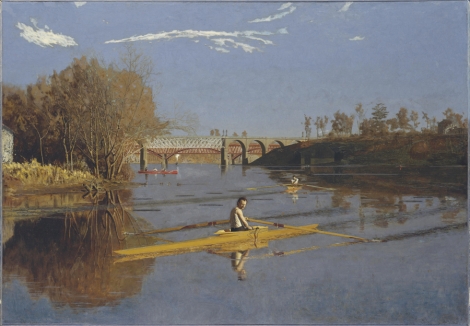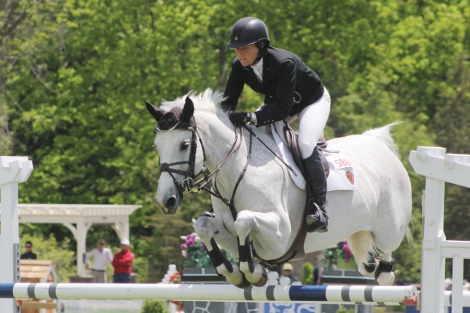“Fencing is like classical music,” says Slava Grigoriev, head coach at the Fencing Academy of Westchester.
Other types of music may be more popular, he adds. But there will always be classical music.
And so it is with fencing. Football, basketball, hockey and baseball may claim the lion’s share of the American sports fan’s attention as we cycle through the seasons. But fencing has its dedicated audience, one that is growing, Grigoriev says.
Indeed, there are any number of fencing schools and programs in our area, including the Armonk Fencing Cub, the Candlewood Fencing Center in Danbury, the Darien Fencing Club, the Fairfield Fencing Academy and the Putnam County Fencing Center in Brewster. But fencing is not just for the suburban elite. Three-time Olympian Tim Morehouse, who grew up in the Washington Heights and Riverdale sections of New York City, plans to teach fencing to a million youngsters over 10 years through his Fencing-in-the-Schools foundation.
It’s the kind of big fencing dream that Grigoriev shares. He is chatting from the bleachers of the Fencing Academy of Westchester in Hawthorne. As he talks, Grigoriev keeps a watchful eye on some of the more than 200 students who train there, pausing from time to time to give the group instructions. It’s the eve of the 2013 USA Fencing National Championships and some of the academy’s students will be among the 7,000 participants. There are, he adds, 14 who will take part in the junior men’s foil competition alone.
At first glance, you might wonder what the big deal is – pairs of students, who can range from 6-year-olds to senior citizens, thrusting and parrying, lunging and retreating, back and forth on narrow mats representing the playing zone or piste. They’re tethered to wires that record the hits from their rapiers. It all seems so civilized, so Old World, so effete, right?
Except that fencing constantly requires the participant to make quick, strategic adjustments in a concentrated amount of time and space. To score, a fencer must hit his opponent in a valid target area of the body over the course of the three 3-minute periods that make up a bout. There are three disciplines – foil, épée and sabre – with three different implements and target areas but one goal for the participants – be the first to score 15 points.
When the fencers pause to listen to Grigoriev, who offers instructions in a low-key but authoritative manner, and whip off their masks their faces glow and their hair is matted to their heads from the effort.
Clearly, fencing is one heck of a cardio workout, which may be why some at the academy on this particular day are hitting the treadmills and elliptical machines in one corner.
For fencing, Grigoriev says, you have to have heart and a heart.
“You have to have power. You have to be coordinated. And you have to be brave. You just can’t follow. You have to do it yourself.”
The bravery part is a reminder that fencing has its antecedents in those bygone eras when men wielded swords with the intent to kill. And as in any sport, some accidents can be lethal. In 1982, Soviet gold medal foil fencer Vladimir Smirnov was fencing Matthias Behr of then West Germany in the World Championships in Rome when Behr’s blade broke, slashing through Smirnov’s mask into his brain. He died nine days later.
As a result of that tragedy, the Fédération Internationale d’Escrime (FIE), fencing’s governing body, requires tournament outfits to be made of ballistic fabrics similar to bullet-proof vests that can resist a force of 800 newtons. (The mask bib must be able to resist double that.)
Grigoriev stresses the safety of the sport, recalling with a smile that it was his mother who got him into it back in his native Kazakhstan.
“She thought it a very safe game.”
The épée specialist was part of the Unified Team of athletes from the former Soviet Union that competed in the 1992 Olympics in Barcelona. He remembers it as the year of American basketball’s Dream Team. Grigoriev, a two-time Soviet Union champion and World Championships finalist (1994, Athens), competed for Kazakhstan in the 1996 Olympics in Atlanta. Having coached in the United States for 12 years, he’s familiar with the positive spin Americans put on failing to medal, the thrill of mere competition. Refreshingly, though, Grigoriev doesn’t hide his disappointment in having finished out of the money, as it were.
He is hopeful, however, that one day one or more of his students – who hail from places like the Hackley, Masters and Rye Country Day schools and have gone on to fence at Ivy League universities, winning numerous national and international titles along the way – will add an Olympic medal.
To achieve that, the student will have to be maybe something of an improvisatory jazz master.
“Fencing has a lot of regulations,” Grigoriev says, “but within those you have a spot to do whatever the body can let you do.”



